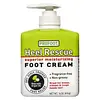What's inside
What's inside
 Key Ingredients
Key Ingredients

 Benefits
Benefits

 Concerns
Concerns

 Ingredients Side-by-side
Ingredients Side-by-side

Water
Skin ConditioningGlycerin
HumectantParaffinum Liquidum
EmollientCetearyl Alcohol
EmollientPropylene Glycol
HumectantGlyceryl Stearate
EmollientDimethicone
EmollientSorbitan Stearate
EmulsifyingUrea
BufferingPolysorbate 60
EmulsifyingStearic Acid
CleansingCarbomer
Emulsion StabilisingTriethanolamine
BufferingMethylparaben
PreservativePropylparaben
PreservativeMelaleuca Alternifolia Leaf Oil
AntioxidantMenthol
MaskingDisodium EDTA
Snail Secretion Filtrate
Skin ConditioningButylene Glycol
HumectantPhenoxyethanol
PreservativeWater, Glycerin, Paraffinum Liquidum, Cetearyl Alcohol, Propylene Glycol, Glyceryl Stearate, Dimethicone, Sorbitan Stearate, Urea, Polysorbate 60, Stearic Acid, Carbomer, Triethanolamine, Methylparaben, Propylparaben, Melaleuca Alternifolia Leaf Oil, Menthol, Disodium EDTA, Snail Secretion Filtrate, Butylene Glycol, Phenoxyethanol
Water
Skin ConditioningStearic Acid
CleansingGlycerin
HumectantParaffinum Liquidum
EmollientCetyl Alcohol
EmollientC13-14 Isoparaffin
EmollientArgania Spinosa Kernel Oil
EmollientTriethanolamine
BufferingPolysorbate 20
EmulsifyingLaureth-7
EmulsifyingTitanium Dioxide
Cosmetic ColorantSodium Bicarbonate
AbrasiveSodium Benzoate
MaskingSqualene
EmollientSodium PCA
HumectantSilk Amino Acids
HumectantAscorbic Acid Polypeptide
AntioxidantUbiquinone
AntioxidantPolyacrylamide
Propylene Glycol
HumectantDMDM Hydantoin
PreservativeMethylparaben
PreservativePropylparaben
PreservativeWater, Stearic Acid, Glycerin, Paraffinum Liquidum, Cetyl Alcohol, C13-14 Isoparaffin, Argania Spinosa Kernel Oil, Triethanolamine, Polysorbate 20, Laureth-7, Titanium Dioxide, Sodium Bicarbonate, Sodium Benzoate, Squalene, Sodium PCA, Silk Amino Acids, Ascorbic Acid Polypeptide, Ubiquinone, Polyacrylamide, Propylene Glycol, DMDM Hydantoin, Methylparaben, Propylparaben
 Reviews
Reviews

Ingredients Explained
These ingredients are found in both products.
Ingredients higher up in an ingredient list are typically present in a larger amount.
Glycerin is already naturally found in your skin. It helps moisturize and protect your skin.
A study from 2016 found glycerin to be more effective as a humectant than AHAs and hyaluronic acid.
As a humectant, it helps the skin stay hydrated by pulling moisture to your skin. The low molecular weight of glycerin allows it to pull moisture into the deeper layers of your skin.
Hydrated skin improves your skin barrier; Your skin barrier helps protect against irritants and bacteria.
Glycerin has also been found to have antimicrobial and antiviral properties. Due to these properties, glycerin is often used in wound and burn treatments.
In cosmetics, glycerin is usually derived from plants such as soybean or palm. However, it can also be sourced from animals, such as tallow or animal fat.
This ingredient is organic, colorless, odorless, and non-toxic.
Glycerin is the name for this ingredient in American English. British English uses Glycerol/Glycerine.
Learn more about GlycerinMethylparaben is a preservative and is a paraben. It is used to prevent the growth of fungus, mold, and other harmful bacteria. Parabens are chemicals used as preservatives in both cosmetics and food.
Methylparaben can be synthetically created. It can also be found naturally in some fruits, such as blueberries.
Oftentimes, Methylparaben is combined with other parabens to help increase the shelf life.
The safety of Methylparaben is currently being studied. While ongoing studies are looking into the safety of parabens, the results have been very mixed. Some studies have not found Methylparaben to be harmful.
Learn more about MethylparabenParaffinum Liquidum is also known as liquid paraffin. It is a type of highly refined mineral oil.
Like other oils, Paraffinum Liquidum has emollient properties. Emollients help soothe and soften the skin. By creating a barrier to trap moisture within, emollients help keep your skin hydrated.
Paraffinum Liquidum does not irritate the skin and is non-comedogenic.
Learn more about Paraffinum LiquidumPropylene Glycol is an odorless, colorless liquid. As a humectant, it helps skin retain moisture. It also aids in delivering active ingredients.
Another role of this ingredient is preventing a product from melting or freezing. Propylene glycol also adds antimicrobrial properties to a product, elongating product lifespan.
This ingredient is considered an organic alcohol and commonly added into both cosmetics and foods.
Those with sensitive skin or conditions may develop a rash when using this ingredient.
Learn more about Propylene GlycolPropylparaben is a preservative and is a paraben with antifungal and antimicrobial properties.
This ingredient can be naturally found in plants and insects, but most of it is synthetically manufactured for human use. In cosmetics, it is usually created by reacting para-aminobenzoic acid and propanol (an alcohol).
You can usually find this ingredient in water-based products.
Parabens have come under controversy due to the claim they are hormone disruptors. Studies show conflicting results. We recommend speaking with a professional if you have any concerns.
Propylparaben is commonly found in food, medicine, and cosmetics.
Learn more about PropylparabenStearic Acid is a fatty acid. It is an emollient, emulsifier, and texture enhancer.
As an emollient, stearic acid helps soften skin. It aids the skin's protective barrier by preventing water loss. It also provides a gentle cleansing effect without stripping away natural oils.
Stearic acid may also be used to enhance the texture of products. It can add volume and stabilize ingredients such as water and oil. This can help water and oil ingredients from separating.
Sources of stearic acid include animal or vegetable fats/oils such as coconut or shea. It can be naturally found in butter, cocoa butter, shea butter, vegetable fats, and animal tallow.
This ingredient may not be Malassezia folliculitis, or fungal-acne safe.
Learn more about Stearic AcidTriethanolamine is an emulsifier and pH adjuster. It is created using ethylene oxide and ammonia. This gives Triethanolamine a nitrogen core and a similar scent to ammonia.
As an emulsifier, it prevents ingredients from separating and enhances texture by adding volume to a product.
PH adjusters are common in cosmetic products. The pH of a product can affect the effectiveness of other ingredients. A product with a high pH may also irritate the skin.
Learn more about TriethanolamineWater. It's the most common cosmetic ingredient of all. You'll usually see it at the top of ingredient lists, meaning that it makes up the largest part of the product.
So why is it so popular? Water most often acts as a solvent - this means that it helps dissolve other ingredients into the formulation.
You'll also recognize water as that liquid we all need to stay alive. If you see this, drink a glass of water. Stay hydrated!
Learn more about Water